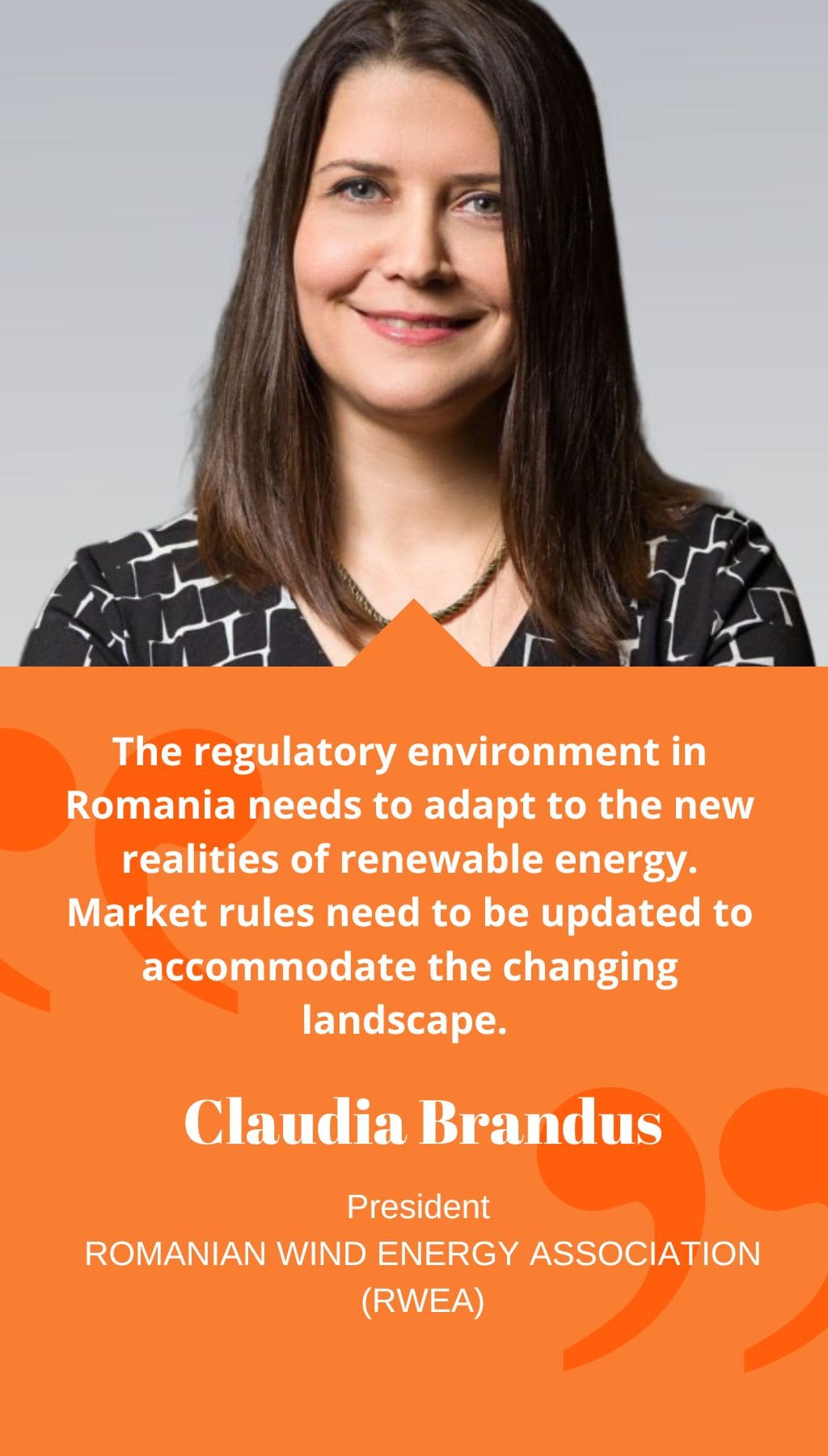
- Romania | 31 August 2019

In promoting the transition to clean energy in Romania, what are the priority areas that need to be addressed by RWEA?
I believe that the first crucial aspect that needs improvement is the dialogue. Public authorities in Romania lack effective organization of public debates, which is unfortunate as bringing all parties to the table and encouraging them to work together to identify the best solutions has great value. Currently, exchanges of opinions are limited and often focused on identifying problems and conflicts, rather than developing common goals. In reality, the energy transition is inevitable, as coal-based production will eventually become obsolete. Therefore, it is in everyone’s interest to collaborate and find the best ways to fill the gap that will be left.
What other areas need priority attention for a smooth transition to clean energy in Romania?
Another critical area that needs attention is understanding the support that the European Union (EU) can provide to Romania in this process. There are ample financing options with substantial amounts available, and as a country, we need to be aware of and utilize them to our advantage. This presents an opportunity for us to undergo the transition without burdening the customers with the costs. The energy system in Romania is already outdated, both in terms of production capacities and infrastructure for transport and distribution. The need for investment is high, and postponing it will only increase the expenses. Additionally, delays in addressing these issues will result in a significant gap in services offered compared to other countries in the world.
What is the current utilization of EU funds in Romania for clean energy transition and what is the investor appetite like?
While there is still a long way to go, I am pleased to note that Transelectrica has started attracting more funding. If they are successful in modernizing the network, it will be easier and more cost-effective to integrate renewables into the system. Moreover, the fact that EU authorities scrutinize the utilization of funds provides an added guarantee as we can leverage their experience in this field.
From a commercial and market perspective, it is a favorable time for investment in Romania. The country cannot afford to not have renewable energy in the coming years as there are limited alternatives to fill the gaps. However, there is a need for a nurturing investment climate. Currently, the country risk has increased, and so have the capital costs. Stability in legislation and protection of investment are critical factors that investors consider when deciding on their next projects. Unfortunately, there is little political openness towards the renewable energy sector, which is reflected in the current climate where Romania is no longer a preferred investment destination for many large companies, including those already present in the country.
How would you describe the regulatory environment in Romania for clean energy, and what changes would the industry like to see going forward?
The regulatory environment in Romania needs to adapt to the new realities of renewable energy. Market rules need to be updated to accommodate the changing landscape. For instance, intra-day trade needs to be encouraged due to the variable nature of renewable energy. Currently, the intra-day market in Romania is not functioning effectively, and there seems to be little interest in developing it further. Additionally, the establishment of battery storage facilities is crucial, but Romania lacks secondary legislation to promote this technology. Currently, there is only one battery with a capacity of 1 MW in the entire country, and even that faced significant hurdles during its establishment.














